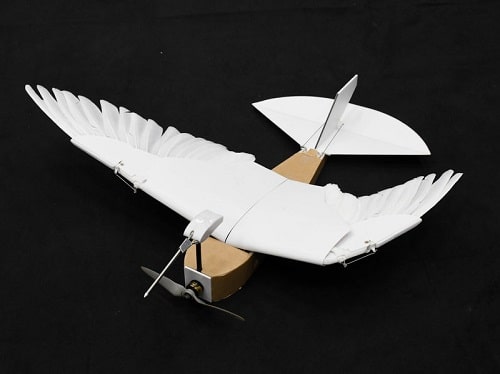Inspired by the flight mechanism of birds, this lightweight aerial invention can be swift and agile while navigating through the skies

For thousands of years, birds have been a fascination to humankind; creating an inspiration to touch the skies. In 1903, this wish was granted when the first aircraft was built. Since then, aircraft technology has come a long way – from commercial planes, spacecrafts and fighter jets to modern-day drones.
It is a wonder how a small creature can influence humans to design such flying machines. Once again, mankind has resorted to these winged creatures for another innovation.
Researchers from Stanford University have created a winged robot called PigeonBot that can fly similar to a bird. The robot is very life-like and can be easily mistaken for an ordinary bird flying in the sky.

“What’s really cool about this robot is (that) you can make manipulations in a robot wing that you could never do or want to do in a bird,” said David Lentink, engineer and head of Stanford’s Bio-Inspired Research & Design (BIRD) Lab.
Extensive bird flight analysis
In order to come up with this flying device, the researchers extensively studied bird flight patterns, wing shapes, feather dynamics and so on. They got to know that with a simple flick of the wrist and finger, birds can move their feathers.
Moreover, actual pigeon feathers were employed for the robotic wings. Gaining an insight into these phenomena, helped the researchers understand how birds modified their wing shapes to swiftly glide through the skies.
No air gaps
Another important aspect of bird flight is to keep the feathers close to each other while spreading the wings. This “closeness” ensures that no air gaps are formed between the feathers.
When wings are expanded, the individual feathers slide over each other. At the same time, tiny hooks protruding from the top of each feather cling together, thus keeping the entire wing intact – much like velcro.

“These tiny, microscopic microstructures that are between feathers lock them together as soon as they separate too far apart and a gap is about to form. And it’s really spectacular,” Lentink adds.
After conducting rigorous tests in wind tunnels, these real feathers were attached to the robot’s body and through a spring-like mechanism, were connected to a wrist and finger structure. When the wrist and finger moved, all the feathers moved too.
“Most aerospace engineers said this is not going to work well, but it turned out to be incredibly robust,” Lentink said. “Aerospace and materials engineers can now start rethinking how they can design, manufacture and control materials and wings that morph as deftly as birds do”
A thing to note here is that unlike a real bird (or pigeon), the PigeonBot does not flap its wings while in motion in the air.
Agile airborne machines
Since bird motion is flexible, this innovation can prove to be a turning point for creating airborne machines that are agile. These agile machines, in turn, can easily manoeuvre through dense spaces consisting of buildings and trees.
Aircrafts have rigid sets of wings and drones have rotary technologies that are quite complicated. With this technology, they can now have a lightweight body. This, in turn, can lead to lesser fuel consumption (battery charge in case of drones).
Possible implementations
Due to its robust design, there is a possibility that it can be used for surveillance purposes by the military. This design might also find use in delivery services.
In the future, it is expected that this feather-locking technology will contribute towards creating high-tech clothing fasteners or specialized bandages.
Read the research paper here.






